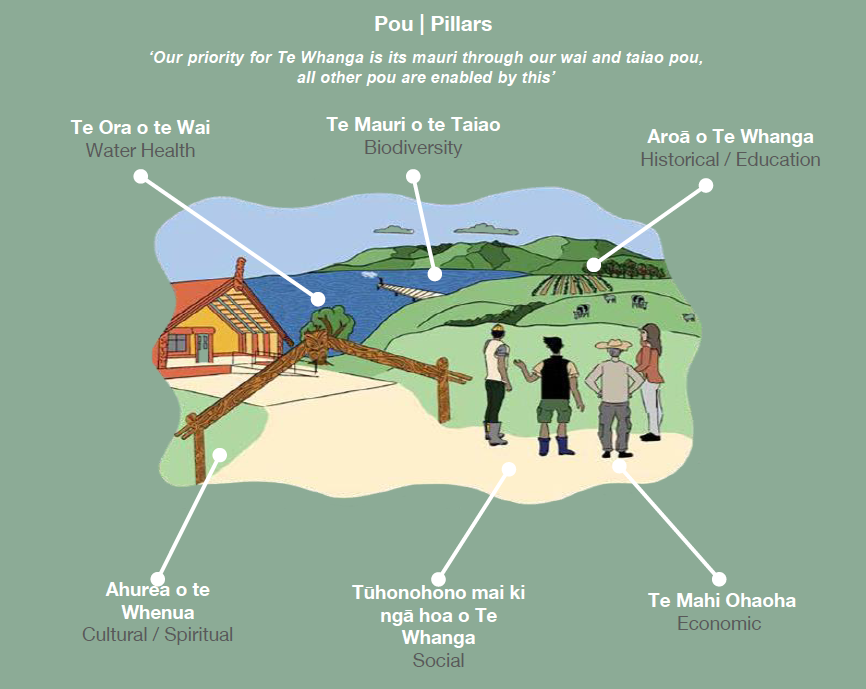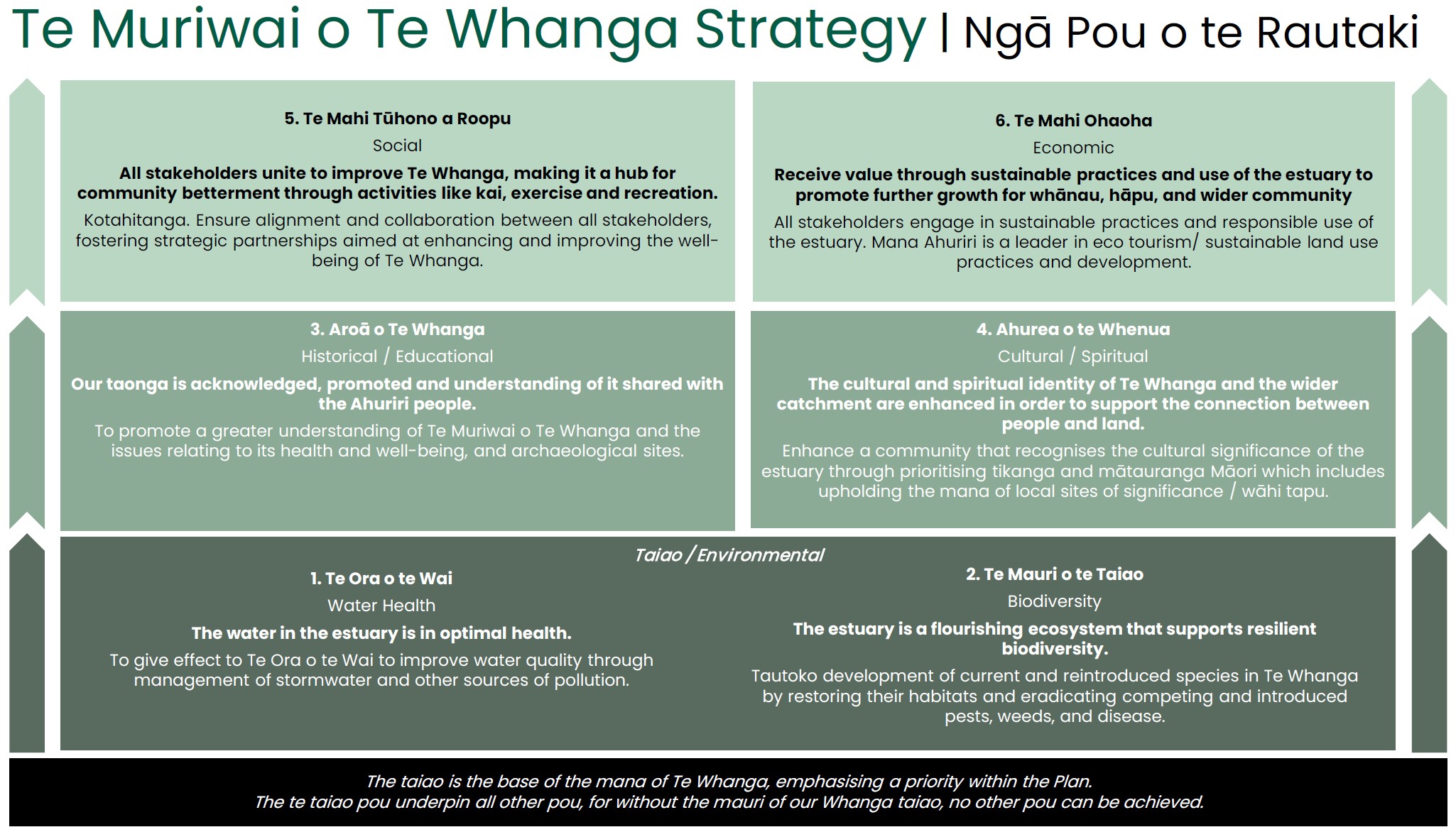Where has this Plan Rautaki come from?
The Ahuriri Claims Settlement Act outlines a set of functions of Te Komiti, and includes their role in identifying the values, vision, objectives, and desired outcomes, and any other matters relevant to Te Muriwai o Te Whanga.
This first section of the Plan, the strategy, accomplishes this through acknowledging past mahi for Te Whangawhile understanding this is a new opportunity to achieve intergenerational outcomes for Te Taiao, our seven Hapū and other Hapū interests.
The following nine elements of the strategy rely on each other. The visionis the guiding aspiration of Te Komiti for Te Whanga. The valuesare how Te Komiti and its partners will be guided through the decisions they have to make for Te Whanga. The whakataukīshares wisdom of the past and future for Te Whanga.
Then the action part of the strategy outlines six Pouwhich together support the vision for Te Whanga. Each Pou has a desired outcome-an aspiration for that element of Te Whanga. Each Pou also has an objective, which outlines how the objective will be achieved and is supported by a series of indicatorsand initiativesthat articulate distinct actions to be undertaken.
Vision
Following an initial wānanga, members of Te Komiti agreed upon a vision that successfully encapsulated the motive behind this Plan. This vision serves as a guiding statement that outlines the long-term aspirations and desired future statement of Te Muriwai o Te Whanga.
Values
Partners within Te Komiti collaborated to create a collection of values that effectively illustrate the ways of working for Te Whanga. These values were built from the individual values of each partner of Te Komiti and refined through a series of wānanga. These values will be used to guide Te Komiti and partners in their work for Te Whanga.
Whakataukī
A whakataukī shares a concept that is used to inspire, guide, and share wisdom. In this context, the whakataukī acknowledges the aspirations for Te Muriwai o Te Whangaand the wisdom passed down from whakapapa that protected the area.
Pou
Through research to development of the Plan, Te Komiti identified six key areas of focus. These areas, known as the Pou of the Plan, serve as pillars of our work. While each Pou provides individual focus, their collective strength is essential to realise the vision for Te Whanga.
Outcomes
The desired outcomes outline the aspiration for each Pou in line with the overall vision for Te Whanga. They define the measure of success and what will be considered positive outcomes as we achieve the objectives and initiatives of each Pou. These outcomes were developed through wānanga.
Objectives
The objectives are aligned to each Pou and outcome. They outline the specific way in which the outcome for each Pou will be achieved. These objectives were developed via wānanga.
Focus Areas and Indicators
Within each Pou sits a number of focus areas that indicate commonality between initiatives. Each focus area has a related long-term indicator which shows the desired level of achievement for initiatives collectively in that focus area.
Initiatives
The initiatives are key actions that are already or will be undertaken to achieve the desired outcome and meet the objectives under each Pou. Initiatives were developed through background research, understanding of partners work programmes, and engagement with involved and affected parties.
Te Muriwai o Te Whanga Strategy
Rautaki on a page

Ngā Mātāpono | Values
Whanaungatanga
Grounded in whakapapa, whanaungatanga fosters enduring intergenerationalrelationships and partnerships by connecting people, whenua, water, and wildlife, ensuring an understood and shared heritage to effectively inform aspirations for the future of Te Whanganui-a-Orotu.
Kaitiakitanga
Kaitiakitangaembodies an inherent obligation of guardianship, care, and respect, promoting enduring commitment to protect and enhance our environment, empowering communities through active participation and the application and appropriate use of mātauranga Māori for future generations.
Pono
Pono embodies integrity and the commitment to do it right, do it right now, and do it with consistency, ensuring that decisions align with hapū values and are informed to achieve meaningful outcomes throughout the journey.
Whakapakari
Whakapakariemphasisesthe enhancement, nurturing, and growth of our environment and communities. Respecting and restoring what is given, ensuring no further harm to the environment is undertaken, and making decisions that create a better future for our mokopuna.
Kotahitanga
Kotahitanga embodies unity and collective action, driven by a shared vision and shared outcomes, where responsibility and ownership are embraced together with purpose, fostering positive progress while upholding the mana motuhake of Mana Whenua.
Ngā Pou o te Rautaki

